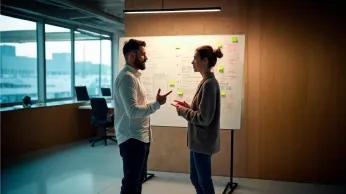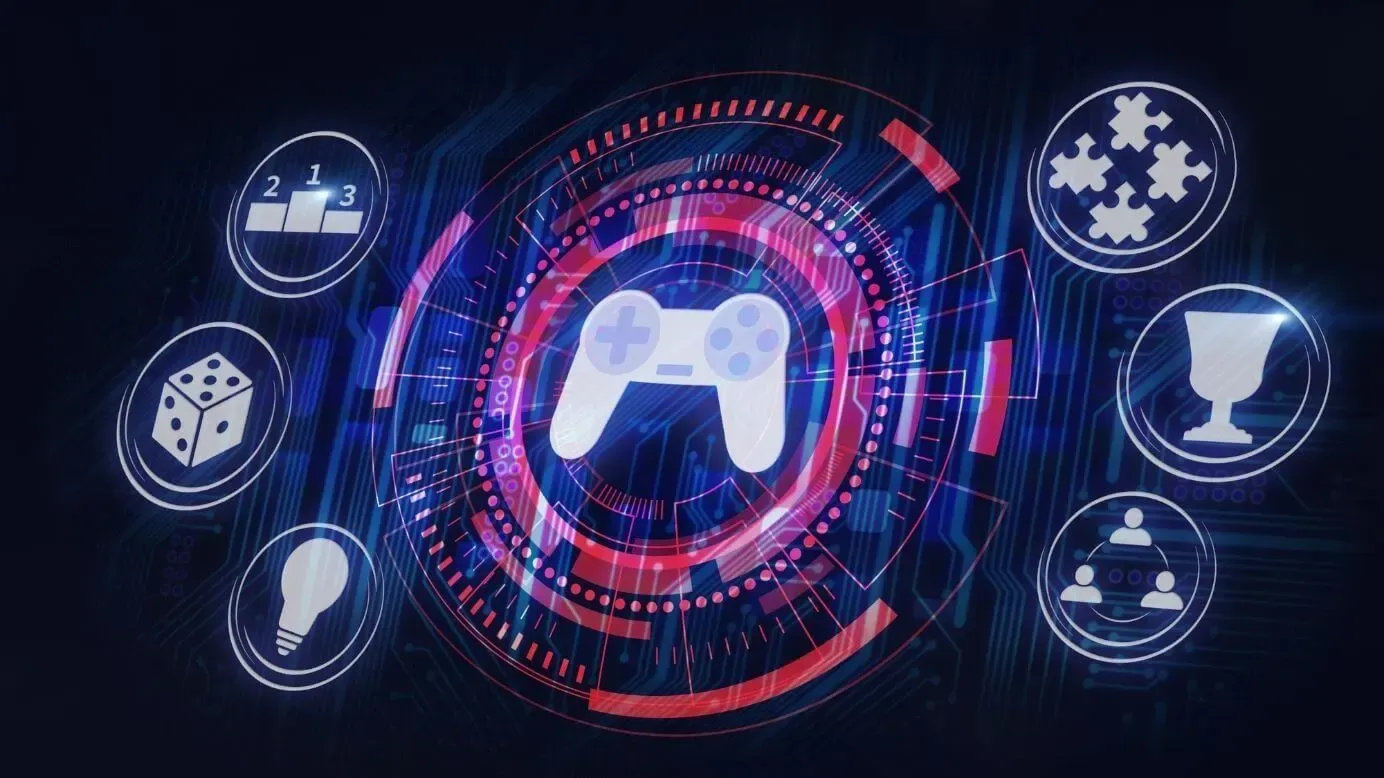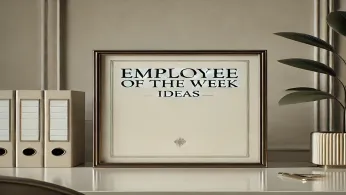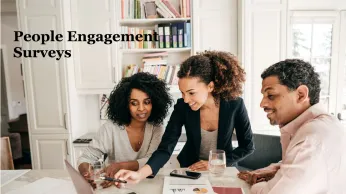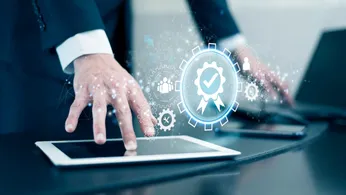How Gamification Boosts Employee Engagement and Performance
Learn how gamification for employee engagement drives motivation, improves performance, and fosters a culture of recognition, collaboration, and goal alignment.
Pada halaman ini
Did you know that gamified workplace initiatives can increase employee engagement, driving higher productivity and a sense of belongingness? A Forbes article has revealed that 70% of business transformation initiatives fail due to a lack of employee engagement, urging employers to focus on implementing steps for employee engagement.
One of India's largest food ordering and delivery platforms uses gamification to solve the engagement of their colossal workforce of over 2 lakh delivery partners. They gamified their delivery partners' attendance, shift completion, and delivery times using Empuls, an excellent example of how gamification improves employee engagement.
Setiap kali rakan kongsi penghantaran mencapai tugas menghadiri penghantaran selama sehari, dihantar dalam garis masa, dan menyelesaikan masa syif mereka, mereka secara automatik diberikan mata.
Mata ini boleh dikumpulkan untuk membeli sendiri produk atau perkhidmatan aspirasi mereka - yang sebaliknya akan menjadi sukar dengan hanya gaji mereka. Menjelang bulan keenam pelaksanaan, organisasi itu mempunyai 86% rakan kongsinya terlibat dan mencapai sasaran.
Considering their operational complexity of being spread across 280+ cities, over 270 of these being tier 2 and tier 3 cities, this achievement is laudable. This reach would have been impossible if not for gamification using scalable technology. The above case is just one of the numerous applications of gamification.
Such an implementation is corroborated by research from Harvard Business School that claims that framing competition as a gain can positively impact an employee’s feeling and their willingness to find creative ways to meet their goals.
Teknik ini digunakan secara meluas dalam pemasaran, inovasi, kesihatan, crowdsourcing, pembelajaran, pembinaan komuniti, sebab sosial, dan penglibatan di tempat kerja. Antaranya, artikel ini memberi tumpuan kepada bagaimana gamifikasi dapat mengubah penglibatan tempat kerja.
Apa itu gamification?
Gamification involves integrating game-design elements such as points, badges, and leaderboards into non-gaming contexts to motivate and increase user engagement. In the workplace, this translates to applying these elements to tasks and processes to make them more engaging and rewarding.
1. Yu-kai Chou
Yu-kai Chou, a gamification author, and international keynote speaker tells us that gamification needs to be designed around the 'core drives' of human beings. He classifies these core drives into eight categories: a higher purpose, achievement, empowerment, ownership, social influences, scarcity, unpredictability, and avoidance.
He believes that the most enchanting of gamification designs necessarily address at least one or many of the above 'core drives'.
2. Gabe Zichermann
Gabe Zicchermann, a gamification expert and public speaker, presents an interesting narrative on the biochemistry of gamification. "Any time you challenge yourselves to do a task, it doesn't matter how big or small - and you succeed - your brain secretes a magical little bit of dopamine - which makes you feel really good.
The more you do this 'challenge - achievement - pleasure' loop, the more dopamine is secreted in your brain making you want to do it more. Thus the more you succeed, the more you want to succeed."
Which elements are essential in gamification for employee engagement?
Rajat Paharia, in his book Loyalty 3.0, describes that gamification has a few or many of the following ten elements (also known as game mechanics) to it:
- Immediate feedback: The user knows whether he is winning or losing almost immediately after his actions.
- Leaderboards: The user gets to know where he is positioned from amongst the rest of the users.
- Goals: The user gets to know where they are headed and what they need to achieve.
- Badges: The user receives badges that are shorthand for past achievements.
- Leveling up: The user is taken through ascending levels of difficulty.
- Onboarding: The user is trained well - all during the course of the gameplay itself.
- Competition: The user is competing with other players or groups.
- Collaboration: The user gets to help and take help from other users.
- Community: The user gets to belong to a community of others who have similar gaming interests.
- Points: The user accumulates points throughout the gameplay.
That said, ticking off the elements of gamification does not ensure a valid gamified solution. The author of 'Gamify,' Brian Burke warns us of how a few companies have a misconception that gamification is a magic elixir that can be used to indoctrinate masses to perform the company's bidding. Users can quickly sense poorly designed solutions and start actively avoiding them, leading them to collapse.
When should organizations implement gamification?
Organizations should consider implementing gamification when they observe low employee engagement, high turnover rates, or a lack of motivation. It's particularly effective during onboarding, training, and performance management phases.
Gamified onboarding can enhance the new employee experience by making the process more interactive and informative. Similarly, incorporating gamification into training programs can improve knowledge retention and skill development.
Mereka bentuk gamifikasi untuk penglibatan pekerja
Brian Burke in his books and Yu-kai Chou continually emphasizes how a gamification design needs to incorporate 'core drives' or intrinsic motivations of the user. This means the game architect needs to go beyond game mechanics and study the true motivations of the target users. Along with the business scope, the user's scope in the solution needs to be constantly evaluated.
Brian Burkes memperoleh tujuh langkah berikut yang harus bertindak sebagai rangka kerja semasa reka bentuk gamifikasi - untuk kedua-dua arkitek dan pemimpin perniagaan:
1. Menentukan hasil perniagaan dan metrik kejayaan
Semua usaha yang dimasukkan ke dalam gamifikasi penyelesaian semestinya perlu menghubungkan kembali ke matlamat perniagaan. Oleh itu, langkah pertama semasa membuat keputusan mengenai penyelesaian perniagaan gamified adalah untuk menentukan matlamat perniagaan yang cuba diselesaikan.
'20% faster customer first response time' could be an ideal business outcome definition that includes a success metric of '20% improvement' for a typical customer service team.
2. Menentukan penonton sasaran
Siapa yang akan menjadi pengguna penyelesaian gamified? Apa yang akan menjadi profil ideal mereka? Apa yang mendorong mereka? Ini adalah soalan penting untuk memahami penonton sasaran secara mendalam. Semakin banyak pemahaman ini, semakin banyak gamifikasi akan menangani pemacu teras mereka.
Referring back to the customer service team, the target audience for gamification will typically be customer service executives. Their job designs are fairly standardized, iterative, and homogeneous. Core drives like 'higher purpose' and 'achievement,' can break this monotony and introduce higher efficiencies if captured in gamification.
3. Menentukan matlamat pemain
Matlamat pemain harus menjadi subset matlamat perniagaan dan semestinya bertepatan dengan sekurang-kurangnya salah satu pemacu teras pengguna biasa.
Burke talks of an example of how a children's cancer treatment center gamified pain reporting by their patients. The kids are made a part of a "Pain Squad" where they pretend to be a police officer. They are then promoted from rookie to sergeant to chief as they regularly report their pain levels.
Drawing a quick inspiration, the customer service executives in our above example could be given a similar goal - to 'put out' or 'solve' a query as quickly as possible.
4. Menentukan model penglibatan pemain
Bagaimanakah pengguna akan terlibat dalam penyelesaian gamified? Adakah lebih masuk akal untuk menjadikannya permainan kolaboratif atau kompetitif? Berapa lama ia akan bertahan? Apakah bentuk ganjaran yang akan diberikan? Ini adalah soalan penting yang perlu ditangani sebelum peringkat reka bentuk.
In our example, a 'competitive' engagement model makes direct sense because the executives address customer queries individually. There are ways companies have effectively made customer service gamification collaborative under the assumption of it being impossible for a customer service executive to know ALL the answers to all possible client questions. They create teams of customer executives with mixed specializations and allow them to tackle queries together.
5. Menentukan ruang permainan dan merancang perjalanan
The environment the gamification is as important as the solution itself. In the context of employee solutions, it is ideal if the 'play space' is close to their CRMs and ERPs. The entire journey of the user's needs to be mapped, level by level, and challenge by challenge.
Customer Service brigadiers could be given faster-level achievements while they solve customer queries faster. There could be leaderboards showing the position of each of the brigadier's achievements and profile badges representing their positions. It is ideal if leaderboards could be reset after a final win - to democratize the opportunity to win and retry. The history of achievements should be recorded both on the profile of the user as well as a 'hall of fame'.
6. Menentukan ekonomi permainan
Apa yang diterima oleh pengguna sebagai balasan untuk pencapaian mereka? Bagaimanakah ini boleh diurusniagakan lebih jauh? Bagaimanakah rekod transaksi ini diarkibkan? Ekonomi permainan adalah enjin untuk semua reka bentuk ini berfungsi dan menjawab soalan kritikal di atas membantu menentukan reka bentuk permainan.
Since customer service is almost always a direct component of a customer service executive's KRA, better efficiencies could be incentivized using their standard performance rewarding guidelines. Points could be used to track the progress and major milestone wins can be awarded using incentive disbursals.
7. Main, uji, dan gatal
Seperti mana-mana reka bentuk sistem, gamifikasi juga perlu membuka gelung maklum balas dan memahami apa yang perlu diubah untuk menjadikan pengalaman pengguna lancar. Secara konsisten menaik taraf reka bentuk dan cuba menguji mekanik permainan baru yang boleh berusaha ke arah penggunaan penyelesaian yang lebih baik.
Talk to the customer service executives one-on-one and understand the challenges they face in the gameplay. Get their feedback on each of the game design aspects. Reinvent parts of it if necessary- say, make it a collaborative gameplay from a competitive one?
Kesan gamifikasi pada penglibatan pekerja
Semasa menggunakan gamification, adalah penting untuk memahami bagaimana ia boleh memberi kesan kepada setiap penentu utama penglibatan pekerja yang disenaraikan di bawah - kerana penglibatan pekerja itu sendiri adalah gabungan fenomena pekerjaan yang kompleks.
Ciri-ciri individu pekerja dilihat sebagai peramal terkuat penglibatan pekerja dan khususnya, ciri-ciri di bawah adalah penting antara lain:
1. Kecekapan diri
This accounts for the individual's perception of how effective his/her skills will be for the organization and the perception of self-efficacy can be nurtured using gamification that incorporates 'pats on the back'. Employee engagement software like Empuls uses 'spot rewards' and 'badges' for this purpose and these have seen enormous results in both reward ROI and engagement.
2. Daya tahan
Ini menyumbang keupayaan pekerja untuk cepat menyesuaikan diri dengan persekitaran perniagaan dan budaya organisasi dan penyesuaian ini dapat dibuat dengan lebih lancar dan cepat dengan menggabungkan proses onboarding dan latihan. Mekanik permainan ekosistem 'kolaboratif' boleh membantu pekerja baru beralih dengan cepat.
3. Kapasiti peribadi
Atribut peribadi yang positif seperti harapan dan keyakinan berjumlah bagaimana pekerja terlibat dengan organisasi. Mekanik permainan seperti 'Onboarding' boleh digunakan untuk mengukuhkan OKR dan peranan kerja - untuk menetapkan jangkaan peranan dengan jelas.
4. Faktor berkaitan reka bentuk pekerjaan
Reka bentuk kerja adalah elemen kedua yang paling penting untuk penglibatan pekerja dan berikut adalah beberapa ciri yang terdiri daripada:
5 . Maklum balas
Giving and receiving feedback is the most significant of all job design features and gamification can very efficiently help nurture a feedback-positive environment. Employee engagement tool and employee gamification software like Empuls use 'immediate feedback' game mechanics like 'high-fives' and '+1s' to get anonymous feedback from the other users.
Tinjauan gamified (mengisi tinjauan pendapat menganugerahkan pengguna dengan mata), maklum balas, tinjauan pendapat adalah cara yang terbukti untuk meningkatkan respons dan penyertaan. Malah kekerapan dan masa tindak balas untuk mengisi maklum balas boleh dijejaki dan gamified.
6. Pemerkasaan & autonomi
Gamification boleh menyediakan penyelesaian yang cekap untuk memupuk pemerkasaan dan autonomi untuk mewujudkan penglibatan. Gamifying interaksi kumpulan kerja dan menyediakan mata untuk mengambil keputusan secara bebas boleh menjadi cara untuk melaksanakannya. Mata untuk idea-idea baru, penemuan isu, maklum balas, cadangan inovatif, dan lain-lain boleh mencetuskan lebih banyak autonomi kerja.
7. Peluang pembangunan
Mekanik permainan 'Meratakan', 'Lencana' dan 'Papan Pendahulu' adalah kaedah yang cekap untuk mewujudkan pembangunan berterusan di kalangan pekerja. Malah untuk papan pendahulu yang ditetapkan semula, tahap dan lencana akan menunjukkan apa yang telah dicapai oleh pekerja pada masa lalu. Mengikat ini dengan proses penilaian dan perancangan kepimpinan meningkatkan lagi potensinya.
8. Kepimpinan dan pengurusan penyelia segera yang dirasakan
Malah penyelia boleh menjadi 'penonton sasaran' untuk gamifikasi. Merancang gamifikasi yang menjejaki masa yang diambil oleh pengurus untuk menyelesaikan masalah pekerja, tugas semakan, kekerapan interaksi pasukan, pematuhan pengurus terhadap dasar induksi dan kesejahteraan pekerja organisasi, dan lain-lain mekanik permainan 'Persaingan' dan 'Papan Pendahulu' boleh digunakan untuk melaksanakannya di kalangan pengurus yang berada dalam kumpulan yang sama.
9. Persepsi faktor organisasi dan pasukan
Iklim psiko-sosial, komunikasi, kepercayaan, dan lain-lain yang wujud dalam organisasi adalah satu lagi penentu penglibatan pekerja. Nilai teras membentuk asas kepada budaya dan iklim syarikat. Gamification boleh memupuk nilai-nilai ini melalui penggunaan mekanik permainan seperti 'Lencana berasaskan nilai'.
Gamifikasi peringkat pengurus boleh dibuat untuk mengesan sejauh mana dia berkomunikasi dan menyebarkan matlamat organisasi jangka panjang dan jangka pendek kepada pasukannya.
10. Campur tangan atau aktiviti organisasi
Gamification digunakan secara meluas untuk aktiviti kesejahteraan pekerja dan ia telah menemui hasil yang hebat dalam meningkatkan kecergasan dan kecekapan keseluruhan pekerja. Berlari, berjalan dan bersenam batu boleh dijejaki dan papan pendahulu 'hidup' boleh dikekalkan.
Orang Bergabung, salah seorang pelanggan kami, tonggak senaman gamified dan mengurangkan ketidakhadiran yang berkaitan dengan sebab-sebab kesihatan sebanyak 50%. Mereka menggunakan mekanik permainan seperti 'papan pendahulu', 'meratakan', 'lencana', 'gol' dan 'mata'.
How Empuls, the employee gamification software could help?
Gamify employee rewards & recognition with badges, points, certificates, and leaderboards. Motivate employees and improve performance with a healthy competitive spirit using game mechanics.
Empuls empowers organizations to build a culture of appreciation and high performance by integrating gamification into everyday work experiences. Here's how it supports engagement:
1. Motivates with meaningful recognition
Empuls allows peers and managers to give timely and public recognition through points, badges, and social appreciation. This reinforces positive behaviors and aligns employees with company values.
2. Boosts performance through friendly competition
With gamified elements like leaderboards, challenges, and goals, Empuls fosters a healthy sense of competition. It encourages employees to give their best effort consistently and track their progress in real time.
3. Drives continuous engagement
The platform combines gamification with regular pulse surveys and feedback loops, helping leaders stay in tune with employee sentiment and take action to improve engagement levels.
4. Creates a reward-driven culture
Empuls connects performance and recognition with a powerful rewards engine, enabling employees to redeem points for a wide variety of digital gift cards and experiences — adding tangible value to their achievements.
5. Promotes team collaboration and participation
By gamifying collaboration, knowledge sharing, and participation in company initiatives, Empuls helps break silos and improve cross-functional engagement.
6. Enhances platform adoption
Gamified nudges and milestones encourage employees to use internal tools and communication platforms more actively, improving digital workplace adoption.
7. Personalized engagement journeys
With role-based challenges and milestone tracking, Empuls helps personalize each employee's journey based on their department, goals, and performance trends.
Schedule a call now to get a personalized demo!
Kesimpulan
Gamification juga boleh menyelesaikan masalah yang pernah dilihat tidak dapat diselesaikan - seperti apabila sekumpulan pemain Foldit menyelesaikan masalah biokimia dalam masa sepuluh hari sahaja, yang kekal tidak dapat diselesaikan selama 15 tahun. Ini menunjukkan potensi gamifikasi imersif. Kami hampir tidak menggaru permukaan bagaimana gamifikasi boleh digunakan untuk meningkatkan penglibatan.
Dengan persekitaran kerja yang semakin digital - terdapat ruang untuk gamify hampir setiap aspek kerja. Oleh kerana penglibatan pekerja merangkumi semua aspek kerja ini, gamifikasi harus membantu organisasi mewujudkan persekitaran kerja yang sangat cekap dan menarik.


